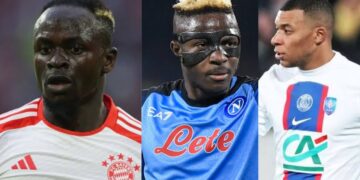Dominance in defeat.
That’s how Corbin Burnes, the consensus top free-agent pitcher this winter, ended his 2024 season.
In Game 1 of the wild-card series against the visiting Kansas City Royals, the burly right-hander was sensational, surrendering just one run over eight sparkling frames. It turned out to be the longest start of the entire postseason. Yet Burnes’ Orioles couldn’t score, not even once, and so he left Camden Yards that evening with a hard-luck loss, his teammates congratulating him and apologizing to him at the same time.
Despite the unsatisfying outcome, Burnes’ year as an Oriole was a success. Acquired from Milwaukee in February for a pair of prospects, he generally performed like the ace Baltimore expected him to be. And while the Orioles are reportedly interested in a reunion, they’ll face serious competition to employ Burnes’ services in 2025, as the 2021 NL Cy Young is set to command a contract in the $200 million range.
But is Burnes worth that type of investment? What are the reasons for concern? Can his next team count on him as a true No. 1 starter? Or is a decline around the corner?
A look back at Burnes’ 2024
Burnes was very good for the first four months of the season, pitching to a 2.47 ERA over 22 starts despite less encouraging peripheral statistics. Most notably, his strikeout rate skidded to a career low. Eventually, that caught up to him. In August, Burnes got blasted, allowing 20 earned runs in 20 2/3 innings across his first four starts of the month.
But in his Aug. 28 outing, Burnes made a massive adjustment. He altered the release point of his trademark cutter, an offering that he throws nearly 50% of the time. The pitch had gained a bit of velocity, causing it to have more carry and less horizontal movement, which made it much less unique and much more hittable. The change brought immediate results.
In September, Burnes scuttled the short-breaking slider he’d been utilizing all year in favor of a longer sweeper — to great effect. Armed with a revitalized cutter and a new breaking ball, Burnes’ strikeout rate soared from 18.5% in August to 27.7% in September and October. And while he punched out only three batters in that magnificent wild-card start, Burnes was in total control, opting to pitch to contact in order to work deeper into the game.
What to make of Burnes’ strikeout rate?
Late-season uptick aside, Burnes strikeout rate has gradually dwindled since his 2021 Cy Young season. That trend has occurred despite no obvious decline in Burnes’ stuff or velocity. While his cutter has maintained its juice over the years, hitters seem to be gradually adjusting to the pitch; its swing-and-miss rate has fallen steadily year over year, sinking from 33.2% in 2021 to 19% in 2024.
Why? It probably has something to do with the pitch becoming less unique over time. In 2021, just seven starting pitchers threw a cutter harder than 91 mph. By 2024 that number had more than tripled, with 24 starters throwing their cutter that hard. Burnes’ cutter remains something of a unicorn — only Reds hurler Graham Ashcraft threw his cutter harder in 2024 — but the league as a whole is certainly becoming … Burnes-ier.
Bulk is value
When Burnes won his Cy Young in 2021, beating Phillies starter Zack Wheeler, he did so despite throwing just 167 innings, compared to Wheeler’s 213. That result garnered ample debate about the merits of bulk versus effectiveness. It’s ironic, then, that since 2021, only two pitchers — Logan Webb and Aaron Nola — have tallied more innings than Burnes.
In an era when starting pitchers aren’t expected to work deep into games, Burnes is a relative outlier. Only eight other pitchers tallied more than 190 innings this past season. Only 22 other pitchers made at least 32 starts. Simply being available can be extraordinarily valuable. Frankie Montas, who posted a 4.84 ERA across 30 starts in 2024, just earned a two-year, $34 million contract from the Mets. Posting pays, which is good news for a horse such as Burnes looking to cash in.
Which teams are potential fits for Burnes?
New York Mets: Sixty percent of the team’s 2024 rotation — Sean Manaea, Luis Severino and José Quintana — are free agents. President of baseball operations David Stearns filled one of those spots with the Montas signing, but the Mets still need a frontline starter and have oodles of money to spend. Remember, Burnes and Stearns were in Milwaukee together for a number of years.
Baltimore Orioles: The most obvious fit is typically the team that just employed a player; the Orioles are the only team with a Corbin Burnes-sized hole. Baltimore hasn’t given out a multi-year, free-agent contract since 2018, but a new ownership group led by billionaire David Rubenstein should have a larger appetite to spend.
Boston Red Sox: If Juan Soto, the winter’s biggest prize, signs anywhere but Boston, Red Sox fans will be clamoring for a top-of-the-rotation arm. And while southpaw Max Fried is probably a better fit with Boston’s righty-heavy rotation, no Red Sox fan would be furious about adding Burnes.
Toronto Blue Jays: As with the Red Sox, Burnes could be Toronto’s Soto pivot. Also like Boston, a left-hander would make more sense, as would spending the cash on a hitter.
Los Angeles Dodgers: Does signing Blake Snell preclude the Dodgers from signing Corbin Burnes? Probably, but would anybody be shocked if the deep-pocketed juggernaut kept the cash flowing? No, not at all.
Washington Nationals: Are the Nationals ready to win in 2025? Probably not. But they also weren’t ready in 2011, when they signed Jayson Werth to a massive deal. There’s probably (understandable) trepidation about doling out another lengthy contract to a pitcher after the dual Patrick Corbin and Stephen Strasburg catastrophes, but Burnes would help push the Nats closer to contention.
All in all, Burnes is one of the top 10 pitchers in baseball — maybe top five if you believe his late-summer adjustments were real. His ability to make in-season changes speaks volumes about his adaptability and athletic intelligence. Not many pitchers could pull something like that off.
And while predicting pitcher injuries is a drunken game of roulette, Burnes has been as reliable as anyone. It’s obviously less than ideal if his strikeout rate keeps declining, particularly if you’re paying him $230 million, but Burnes has shown that he can hoover up enough outs without blowing hitters away. The floor here is relatively high, and the ceiling, as he showed in the wild card, remains supersonic.
He won’t always be an ace, but for now, that’s what Corbin Burnes is.
Read the full article here


























Discussion about this post